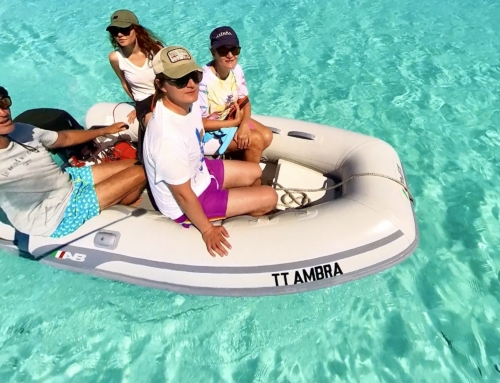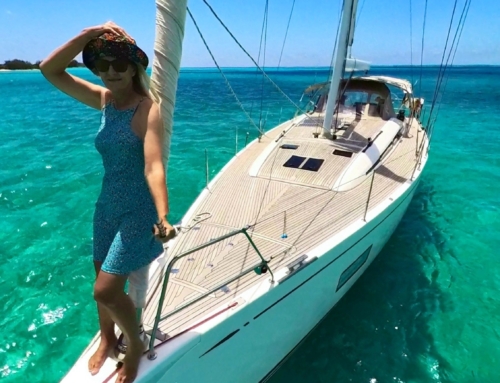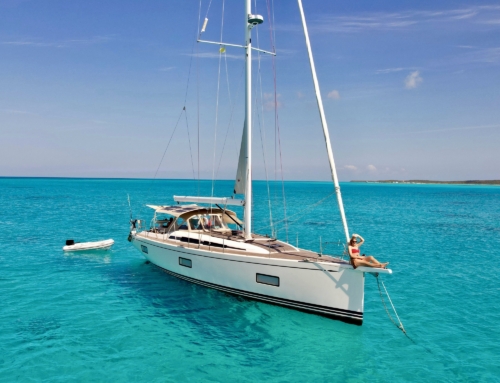
Electric hybrid and propulsion systems for sailing vessels, such as those offered by companies like Oceanvolt (website: https://oceanvolt.com/), are innovative technologies designed to revolutionize the way sailing vessels operate. These systems combine traditional sail power with cutting-edge electric propulsion technology, resulting in a more sustainable, efficient, and eco-friendly sailing experience. Here’s a closer look at how these systems work and their key components:
1.Electric Propulsion System: Electric propulsion systems are the heart of the setup. They consist of electric motors and controllers that replace or complement the traditional diesel engines found in sailing vessels. These motors are powered by batteries and have several advantages, including quiet operation, reduced emissions, and instant torque for enhanced maneuverability. Today you find shaft drive systems or pod drive systems. The new 48V pod drive system, combine a sail drive unit and hydrogenerator. The pod drive can control the pitch of the propeller blades to optimize the angle for ultimate efficiency in both propulsion and electricity generation. Today a propeller on a sailing yacht is only foldable to offer less resistance while sailing.
2. Battery Bank: The power source for electric propulsion is a battery bank. These batteries store electrical energy, typically from renewable sources like the hydrogenerator, solar panels or wind turbines. The stored energy is then used to drive the electric motors, providing the vessel with the necessary power for propulsion.
3. Regeneration: One of the key features of these systems is their ability to regenerate power. When the sails are capturing wind energy efficiently, excess energy can be redirected to recharge the batteries. This regenerative feature extends the vessel’s range and reduces overall energy consumption.
4. Hybrid Capabilities: Electric hybrid systems often offer a hybrid mode, allowing sailors to switch between electric and traditional propulsion as needed. This flexibility ensures reliability and redundancy in case of any issues with the electric components. The term „hybrid“ is used for electric propulsion systems but the energy will be recharged using highly efficient DC diesel generators charging the batteries as well. Diesel has still 10x the energy density over batteries, despite the heat the diesel engine will generate.

5. Quiet Operation: Electric motors operate almost silently, significantly reducing the noise associated with traditional internal combustion engines. This quieter operation enhances the overall sailing experience, allowing passengers to enjoy the serenity of the open water without the constant drone of an engine.
6. Cost Savings: While the initial investment in electric hybrid systems may be higher than traditional engines, the long-term cost savings are substantial. Electric systems are highly efficient, resulting in lower fuel and maintenance costs. Moreover, the availability of renewable energy sources makes recharging more affordable and accessible.
7. Environmental Benefits: Perhaps the most significant advantage of these systems is their positive impact on the environment. Electric motors produce zero emissions, making sailing vessels more eco-friendly. They contribute to reduced air and water pollution, helping to preserve the beauty of the world’s oceans.
8. Versatility: Electric hybrid systems are adaptable to various sailing vessels, from small day sailors to large yachts. They can be customized to suit the specific needs and requirements of each vessel, offering a versatile solution for a wide range of sailors.
9. Longevity: These systems are designed to last. With proper care and maintenance, they can outlive traditional engines, reducing the need for replacement and minimizing waste. This longevity aligns with the principles of sustainability and promotes a greener sailing industry.
Electric hybrid and propulsion systems from companies like Oceanvolt are setting the course for a more sustainable and efficient future in sailing. By combining the power of wind with advanced electric technology, they offer numerous benefits, from environmental conservation and cost savings to quiet, comfortable, and reliable sailing experiences. These systems are not just an evolution; they are a revolution in the world of sailing.
Pure electric systems are more for onshore sailing in and out of marinas today. While for bluewater sailing hybrid systems (diesel gen set/pod drive) might be the better choice, due to the longer distance the system will support. In case you need to cross the doldrums or high pressure zone of the Azores the systems are better suited.
Below the picture shows the complexity of a diesel engine versus an electric pod drive.

Case Study – Swan 55 SY Night Train
This was an engine refit by taking the 6 cylinder diesel engine out and installed a 40KW/48V electric shaft drive motor. The system is supported by a 28KW lithium battery pack and a 22KW DC genset.
Propulsion power: we are actually a bit better in practice than on paper. We reach our typical cruising speed of some 7.5 knots well below 20 kWh. Responsiveness is instant when manoeuvring in ports etc. Great also in rougher conditions. – Range: we can motor some 1 – 1.5 hours (depending on conditions) from our battery bank. If required, our 22kWh DC generator provides power to take us as far as we have diesel in the tanks – that is above 1,000 nm if fully fuelled up.
– Hydro re-generation: our shaft drive is not the optimal set-up for this. However, we re-generate some 800-900Wh produced around 8.5-9 knots and some 350 Wh at 6 knots.
- Electricity onboard: our 28kWh battery bank takes us beyond 10 hours if we would run air-conditions, hot water etc. continuously. We still also have our 24V battery bank of some 12kWh, which powers the 24V side and also the refrigeration and freezer compressors. This is charged via DCDC converters from the 48 V side but can be run also independently providing extra buffer. When starting to run out of electricity the 22kWh DC generator pushes 22 kWh directly to the battery bank (very quietly). This compared to the old AC generator (very loud) providing 1.2kWh charging via the battery charger – basically useless.
- This dimension has made a huge difference on daily life onboard (as we prefer to anchor). We can run everything as we would be hooked up to shore-power – air-conditioning, water heater, fridge/freezer etc.
For the usability and flexibility of the boat has increased a lot – silence in all conditions combined with true electricity independence. Would I do it again with all the hindsight – yes, and would actually insist on it!“ – Johan Wentzel, owner of S/Y Night Train.
More information on:
Youtube Testimonial SY Night Train
Click here for more information about energy management .






Hinterlasse einen Kommentar